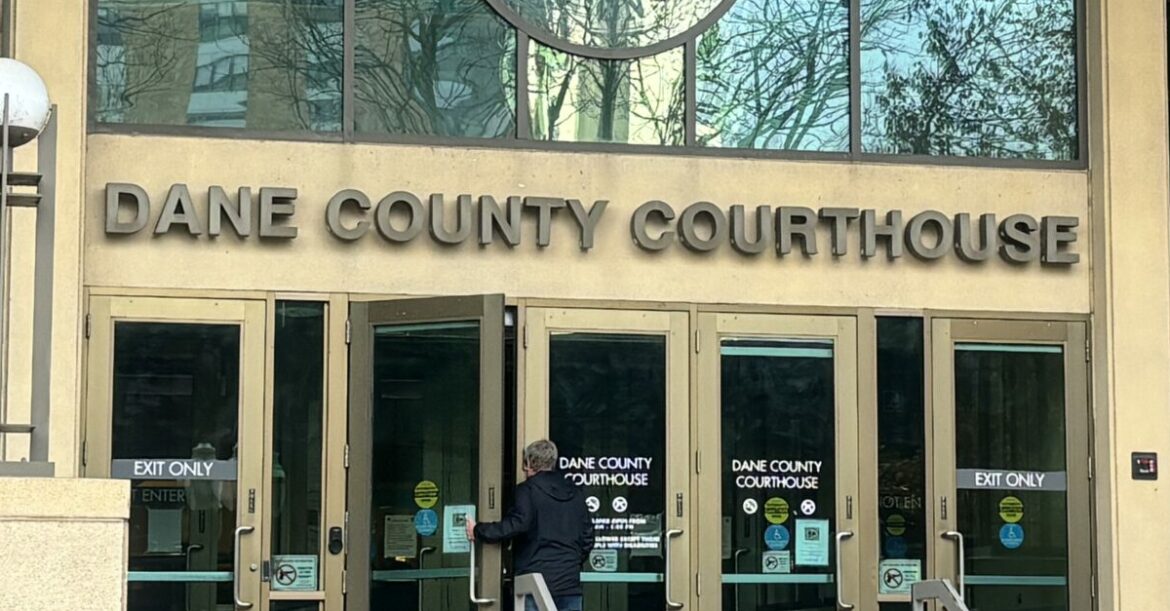The COVID-19 pandemic transformed nearly every corner of public life, and the Dane County Court family court was no exception. What began as a temporary solution to keep cases moving during lockdown has become a lasting feature of the justice system: the virtual courtroom.
Before 2020, the idea of appearing in court from home or over the phone was uncommon. But like every institution, the courts had to adjust quickly to meet the needs of the public. Today, nearly six years after the pandemic started, virtual hearings remain a regular part of family court in Dane County.
Wisconsin has no statewide standard for when virtual hearings should be used, leaving counties to set their own practices. In Dane County, virtual proceedings now play a major role in the court’s daily operations. According to Jennifer Binkley, director of the Family Court Clinic at the UW–Madison Law School, status conferences are commonly held by phone or Zoom. If mediation, the process through which parties try to reach an agreement or a partial agreement, is unsuccessful, the assigned judge will schedule a status conference to review the case, evaluate what information might be needed to move the case forward and monitor the progress of a case.
As the next step in the divorce process, stipulated divorce hearings, in which spouses present mutually agreed-upon terms for a judge to review in order to finalize the divorce, are are also “often being held via Zoom or phone, especially if there is an attorney involved and all paperwork has been submitted prior to the hearing,” Binkley wrote in an email.
Routine child support hearings have moved online as well. These hearings, Binkley wrote, are now all held over the phone and “initiated by the Child Support Agency and held with the Court Commissioner.” Prior to the pandemic, families had to travel to the courthouse for brief hearings that often lasted only minutes.
Now, attorneys connect with families virtually to gather information and work out agreements. Binkley wrote that, “if needed, more extensive hearing can then be scheduled in person.” Additionally, individuals who live far away from the courthouse can request virtual appearances, and those requests are usually granted.
While these procedural changes might seem technical, they shape the experiences of real families navigating some of the hardest moments of their lives. Family court is among the most emotional and challenging areas of the legal system. Cases can involve sensitive matters such as divorce and child custody, adoption and child support or domestic violence. These cases do not just involve legal rights; they touch on feelings of love, trust, betrayal and safety. Family law is “about helping people move forward in the middle of the personal crisis,” Cynthia Griffin, the managing partner of ModernFamilyLaw in Atlanta, GA, noted in an episode of the podcast Experts Explain Everything, adding that “it requires both legal tools and human empathy.”
According to Cary Bloodworth, a supervising attorney of the Family Legal Advocacy & Supports Clinic at the UW–Madison Law School and an expert in family and child welfare law, family court is often a frightening place, especially for children. Virtual hearings have had an “overall positive impact" for the court system and people moving through it, she said.
Virtual proceedings also reduce logistical and financial burdens. In addition to creating emotional stress, attending hearings in person is also time-consuming and costly. Attending court in person often requires missing work, arranging childcare and paying for transportation or parking, additional expenses that are especially difficult for families who might already be experiencing economic hardship.
But having the ability to join hearings during work breaks or from home while caring for children can be extremely helpful to people, Bloodworth said.
Virtual hearings are now also recognized as a key way to bridge justice gaps in rural communities facing attorney shortages. As of 2022, the Justice Gap Report found that rural communities in the U.S. did not receive any or enough legal assistance to resolve 94% of their legal problems. However, an October 2025 report by the Legal Services Corporation, a nonprofit dedicated to promoting equal access to justice and providing civil legal assistance to low-income persons, cited virtual hearings as a promising practice to give people living in rural areas greater access to legal services. Among other measures, the report recommended using online platforms to expand the availability of virtual consultations to increase remote access.
Another benefit of moving court proceedings online is that they can often reduce the legal fees of individuals. “If you don’t have to pay your lawyer to travel to court, you will certainly save fees,” Binkley wrote.
Still, virtual courtrooms bring challenges. Some judges remain cautious about their informality, Bloodworth said. “People are doing things they would never do in a courtroom,” she added, before describing a Michigan hearing in which a police officer appeared on Zoom without pants. Assessing the credibility of witnesses can also be more difficult when hearings are held online. “A judge’s job is to find the facts in family court, figure out who to believe. When you try to do it over Zoom, it makes it harder, which is why most contested hearings”—cases that go to trial— “are held in person,” Binkley wrote.
Confidentiality presents another potential pitfall. Under Wisconsin Statute 905.03, confidentiality is defined as part of the lawyer-client privilege, yet judges and attorneys cannot always ensure that there are no unauthorized individuals off-screen during virtual hearings.
Basic technology issues also pose challenges. Unstable internet connections, people fumbling to navigate online platforms and problems submitting documents electronically can disrupt hearings.
“Getting paper documents into the court before a virtual hearing can be tricky if you don’t know how to use the electronic filing system,” Binkley wrote, calling this her biggest concern about online hearings. Despite these obstacles, hybrid court models appear to be firmly established. For many families, that means the court is becoming less intimidating and more accessible than ever before. Six years after the pandemic, Wisconsin’s family courts may be showing that technology is changing not only how justice is delivered, but how it feels. Bloodworth stated, “Court is scary, and virtual hearings take some of that fear away.”






